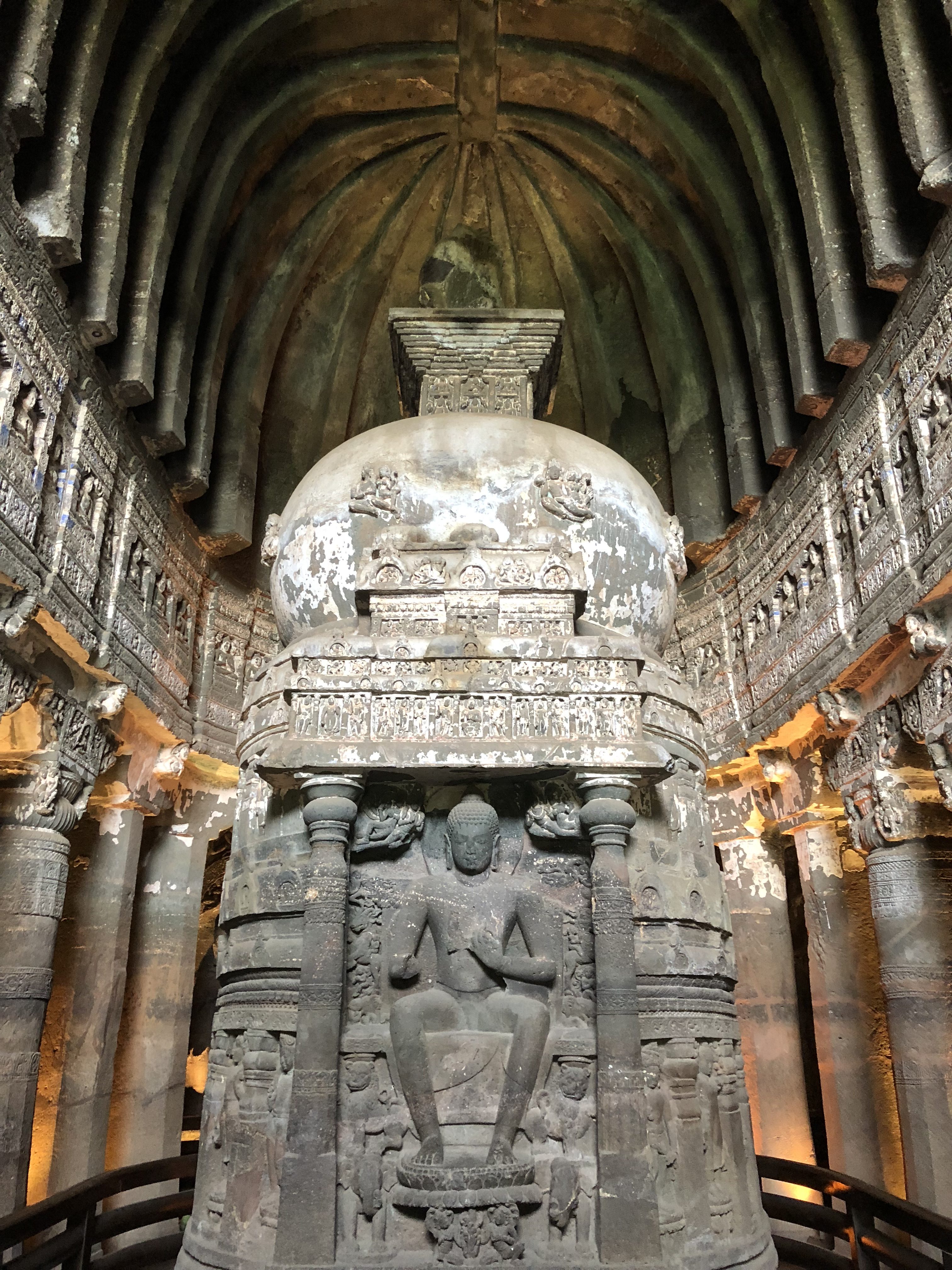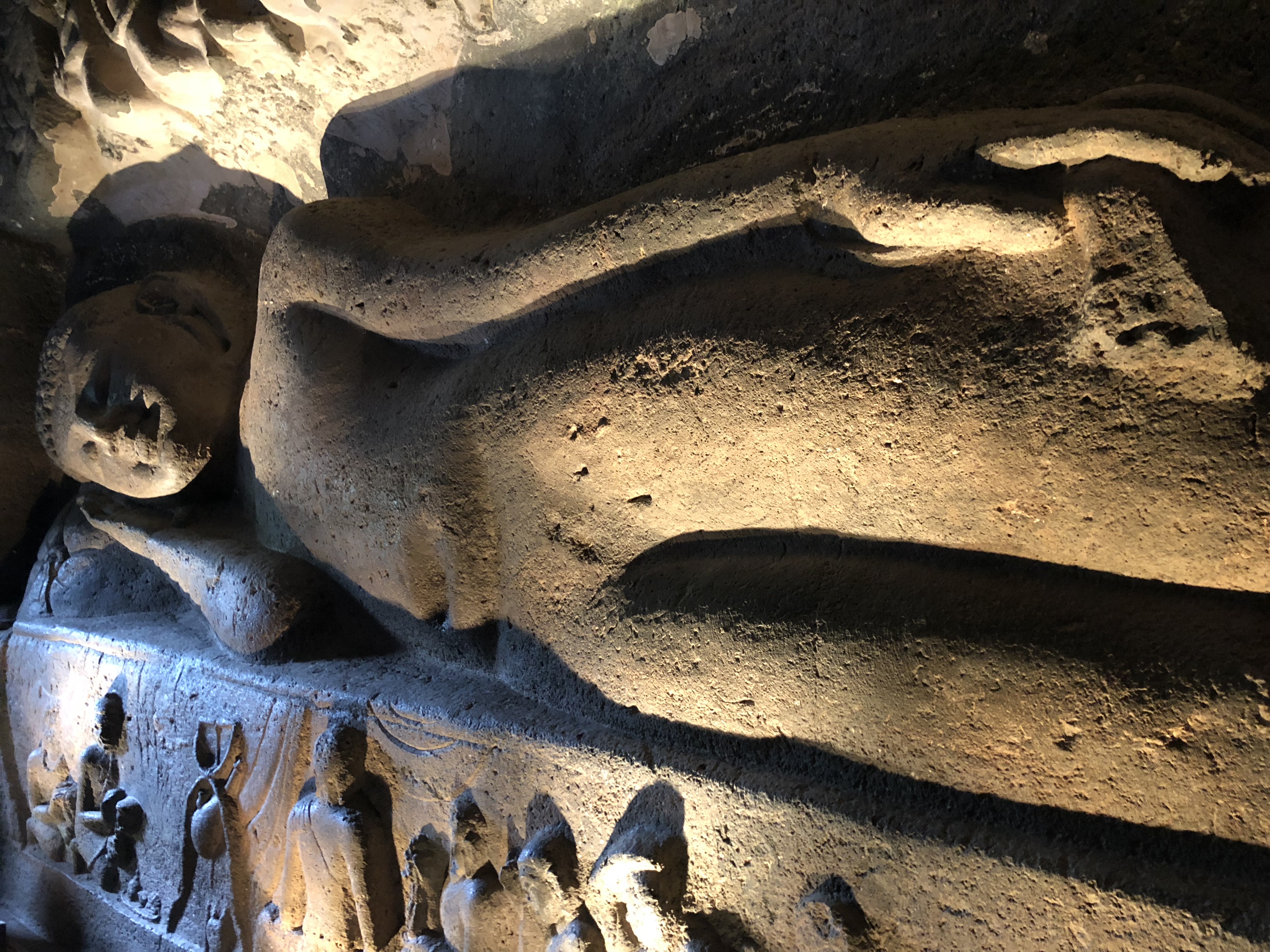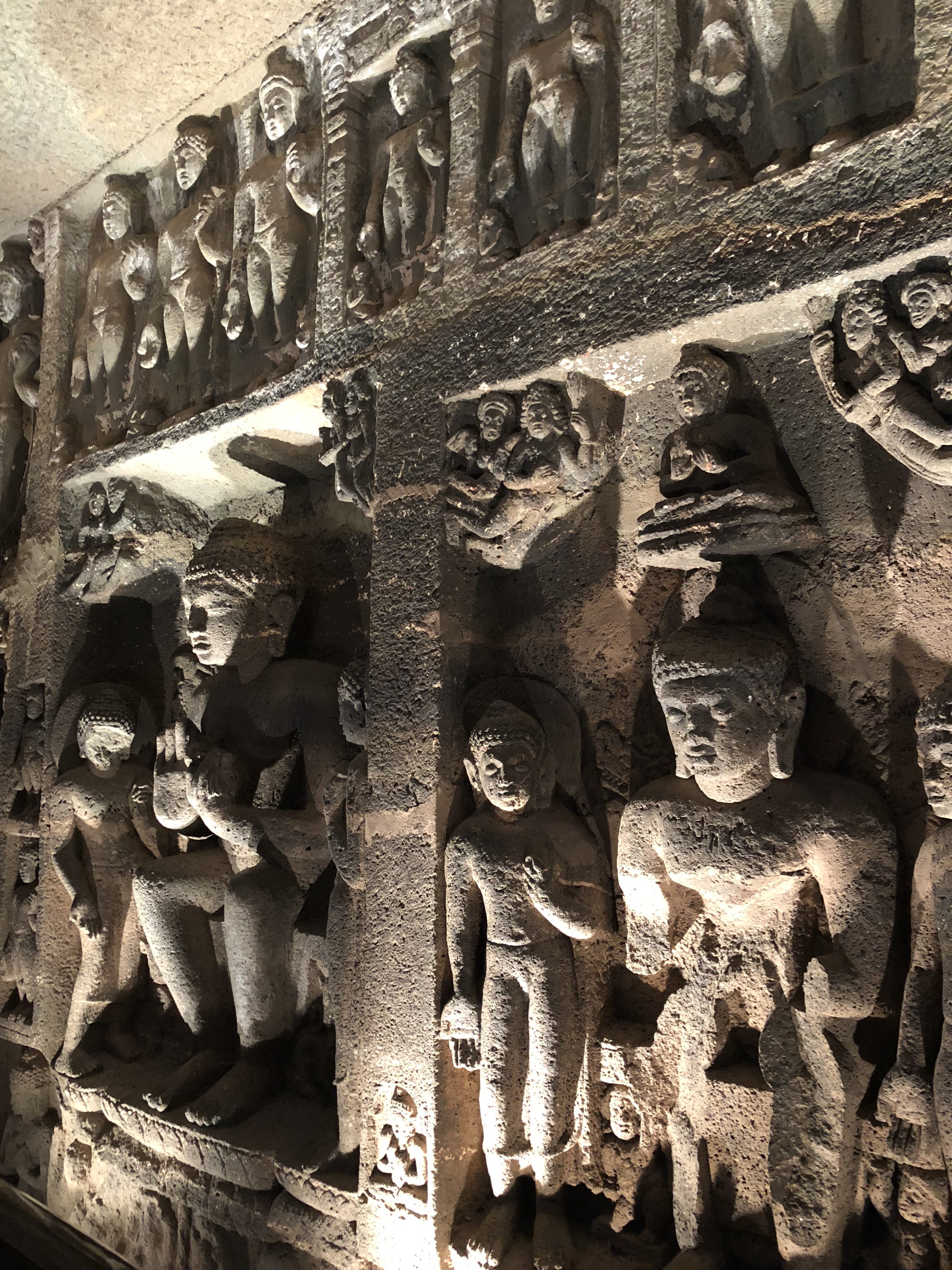Of all the caves at the Ajanta complex, I found Cave 26 to be the most intricate, with the unmistakable sense of, “yes, this is it.” We were looking at the literal, physical transition between the earliest days of itinerant wanderers (sramanas) and the days of settled monastic institutions. Unlike the other caves that I felt a personal affinity with, which were cut in the wider vihara variety, Cave 26 is a chaitya-griha (which combines the comparable nave of an Orthodox Church with an outer cloister for circumambulation).

The chaitya has a ceiling mimicking what would seem to be wooden beams (perhaps completed by a kind of canopy that would have been held in place by the beams). The main shrine at the far end is a true masterpiece of spiritual devotion. It defies Mahayana and Theravada categorization, housing a Buddha image within a stupa, one of the very earliest representations of the religion’s founder. To the left side of the cloister is a sublime frieze of the Buddha’s Parinirvana, complete with a mourning Vajrapani (Herakles) and Subhadda, the last disciple to hear the Buddha’s word, who sits alone in calm contemplation of the impermanence of all things among a sea of crying monks and princes.

An inscription (450-525 CE) found on the wall of this cave’s verandah notes that this chaitya-griha was gifted by a monastic donor, Buddhabhadra, who is listed as a friend of Bhavviraja, a minister of Vidarbha, the king of Asmaka. This was the era in which Buddha images became commonplace, proliferating across South Asia and then across the Silk Road. This shows in the artistic preferences of Buddhist devotees and monastics, regardless of school affiliation or Vinaya alignment.

Cave 26, like so many other caves at Ajanta, is as mysterious as it is beautiful: so much expressed in this one chaitya-griha, yet so much left unsaid. I prefer to leave the interpretations of the rock-cut deities, narratives, and Buddha images to the art historians and scholarly experts. Whenever I visit these ancient monuments to Buddhism’s earliest extant material history, I walk in as a pilgrim. I let the stone whisper its ineffable wisdom. I emerge a man reminded of the cosmic purpose of life.


Thanks for sharing this moving piece, Raymond.
I have a sense that the Buddha Rupa was carved into the stupa at a later time to the aniconic stupa that was originally carved out.
Thank you for this important observation, Shantum. That’s probably the most likely explanation as the cave seems to have evolved over a span of several centuries.